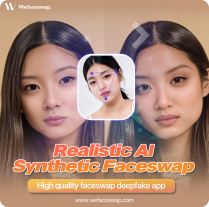AI Face Swap Tools: What You Need to Know
AI Face Swap Tools: What You Need to Know
Blog Article
How Face Swap Technology is Transforming Photo Editing
The transformation of experience trade engineering from a trendy uniqueness to a main-stream trend is nothing short of fascinating. Originating as an enjoyable filter on early picture apps, face swaps have today become an important element of social media marketing content development and also skilled industries. Having its quick evolution and increasing recognition, deepfake (딥페이크) engineering has captivated thousands worldwide. Systems like Experience Exchange have performed a significant role in that trend, giving advanced and innovative face trading techniques which can be an easy task to use.

Deepswap is just a cutting-edge deep learning engineering which allows for high-quality face trades with just a few clicks. It utilizes artificial intelligence (AI) algorithms to analyze face functions and seamlessly change them with yet another person's. This has exposed an environment of innovative possibilities, enabling customers to create jaw-dropping visible results and unique content. Let's explore some of the exciting tasks you may make with Deepswap.
The Early Times of Experience Exchange
Face exchange technology first appeared in the first 2010s with standard photo-editing apps. These early iterations were frequently clunky, making funny but glitchy effects that fueled their charm solely as entertainment. People might trade encounters with buddies, pets, or even celebrities, discussing these hilarious pictures on social networking platforms. While basic, this entry-level engineering exposed the doorway for developers to investigate their untapped potential further.
Growth Propelled by Social Press
Rapidly forward to the mid-2010s, and the rise of programs like Snapchat and Instagram catapulted face swaps in to popular culture. What was after restricted to fixed images was now being transformed in to real-time video filters. FaceSwap, Snapchat's well-known lens, became among its most widely used functions, participating an incredible number of customers daily. Reports claim that by 2016, about 60% of Snapchat users had attempted their experience change feature at the least once.
Simultaneously, social networking influencers began adopting experience swaps for content formation, heightening diamond through creativity and humor. This growing development more cemented the technology's existence in popular lifestyle, going beyond leisure and emerging as a strong instrument for storytelling.
Advanced Engineering and Broader Programs
Nowadays, advancements in artificial intelligence (AI) and device learning have improved face exchange tools, making them more specific and genuine than their predecessors. Deepfake technology represents the cutting-edge kingdom of face changing, enabling hyper-realistic overlays of one experience onto another. Beyond activity, qualified fields like filmmaking, promotion, and even virtual education have embraced these innovations.

For example, in 2021, studies suggested that nearly 15% of digital marketers were experimenting with AI-driven video personalization applying sophisticated experience swaps. That change illustrates how experience change technology is crossing in to practical applications, advancing their increasing popularity.
A Trend on the Increase
What makes face swaps evergreen is their availability and adaptability. Because of mobile-friendly applications powered by AI, anyone can experiment with experience swaps without technical expertise. Whether for lighthearted enjoyment or professional use, the expansion of this technology suggests continued growth.
From their humble origins as a photo-editing uniqueness to their modern-day programs in AI and marketing, face trade engineering has evolved remarkably. With more developments beingshown to people there, this trend is set to keep their popularity for decades to come.
Report this page